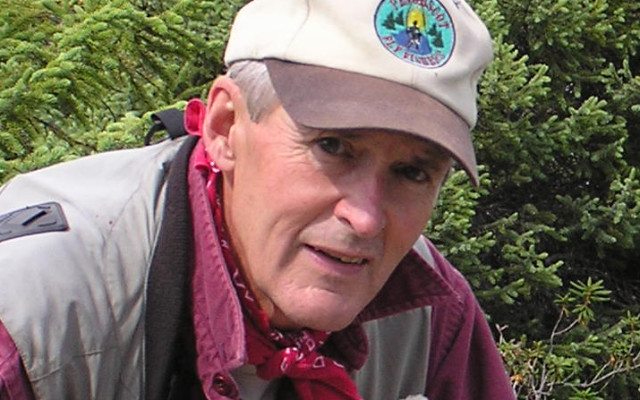
Spring bear hunt might help deer herd
By V. Paul Reynolds
In the St. Lawrence seaway, Anticosti Island’s whitetail deer population is flourishing with upwards of 50 deer per square mile. During the first day of my hunt there I saw 36 deer!
As a Maine deer hunter, you can’t help but ask yourself this question: what is the variable that explains this stark contrast between this island’s big woods deer numbers and Maine’s north woods deer numbers.
On Anticosti snow is a constant during the winter months. Snow depths there, as well as bitter cold, are comparable to Maine’s north woods. Granted, deer mortality through the Anticosti winter may be mitigated by the deer’s access to massive, nutritious kelp beds along the beaches on the island’s south side. Still, particularly harsh winters on the island have taken large numbers of wintering deer. However, with such deer densities to begin with, the Anticosti herd can withstand a significant winter kill.
The variable is this: other than man, the Anticosti deer have no natural predators! There are no coyotes or black bears on this island.
As you know, this is not the case in Maine. We have an estimated 35,000 black bears and far too many coyotes. Unfortunately, Maine’s Department of Inland Fisheries and Wildlife does not have a very good handle, or hard data, on the extent of predation on deer by coyotes and bears. Here’s what we do know. Venison comprises about 80 percent of a coyote’s winter diet. Officially, MDIF&W contends that bears are “inefficient predators” and survive mostly on vegetation. A New Brunswick study, however, asserts that bears kill a lot of deer fawns in the province. And career Maine bear biologist Randy Cross has said that bears kill as many fawns as coyotes. Veteran state deer research biologist Gerry Lavigne believes that predation by bears accounts for 50 percent of Maine’s fawn loss.
Perhaps it is way past time to revisit the spring bear hunt issue. If we are serious about rebuilding our big woods deer populations, we need to cull more bears, as well as maintain our public and private coyote control programs. The fall bear hunt isn’t doing the job.
The Sportsman’s Alliance of Maine supports a modified spring bear hunt that would target specific big woods areas that encompass major deer wintering areas. According to SAM’s director, David Trahan, his organization is working on legislation to this effect.
Past opposition to a spring bear hunt in Maine has always been socio-political, not biological. SAM’s on the right track. It is time to get beyond that. The Anticosti model is compelling and logical.
___________
.
The author is editor of the “Northwoods Sporting Journal.” He is also a Maine guide and host of a weekly radio program — “Maine Outdoors” — heard Sundays at 7 p.m. on “The Voice of Maine News – Talk Network.” He has authored three books; online purchase information is available at www.maineoutdoorpublications.com. or www.sportingjournal.com. Contact email — vpaulr@tds.net.